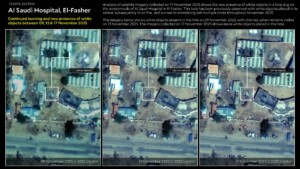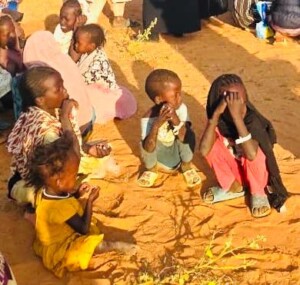Sudan population exceeds 43 million, nearly one in four in need of aid
According to estimates of Sudan’s National Population Council, the population of the country consists of about 43.2 million people. Approximately 9.6 million people are experiencing high levels of acute food insecurity between June and September, the Integrated Food Security Phase Classification reported.
 Current Acute Food Insecurity Situation in Sudan from June to September 2020 (IPC)
Current Acute Food Insecurity Situation in Sudan from June to September 2020 (IPC)
According to estimates of Sudan’s National Population Council, the population of the country consists of about 43.2 million people. Approximately 9.6 million people are experiencing high levels of acute food insecurity between June and September, the Integrated Food Security Phase Classification reported.
About 30.5 million of Sudan’s population, 69.8 per cent, are under 30 years of age. This number is expected to rise to 34.2 million in 2025, and to 37.6 million in 2030, Wisal Hussein, Secretary-General of the National Population Council reported on Tuesday.
Hussein said in a press statement on the occasion of the commemoration of the victims of the December Revolution that Sudan is witnessing an unprecedented demographic development.
She expects the recent growth to continue, bringing the population of Sudan in 2035 to 62.3 million, and pointed to the consequences for the country, not only in the field of economic, environmental, social, and cultural development, but also for the security and peace in Sudan.
The government should consider “the benefit of the demographic dividend”, and “convert it to an increased production, to security and stability for the people in their livelihood, housing, and transportation”. It should “invest in building the capabilities of the Sudanese youth and work force, and in providing jobs and small businesses opportunities, in education, innovation, technological progress, and in health”.
Hussein called on the government to expand education at all levels for all, especially for girls and women, and involve them in strengthening societal stability.
No food
An estimated 9.6 million people are experiencing high levels of acute food insecurity and are in need of urgent action in the coming three months, the Integrated Food Security Phase Classification (IPC), stated in its latest Sudan Food Security Classification Snapshot.
“This is the highest figure ever recorded in the history of the IPC in Sudan,” the researchers said.
“Food insecurity remains alarmingly high in Sudan with increased and protracted displacement, economic decline and inflation, and high food price hikes, exacerbated by the impacts of the COVID-19 pandemic.
“The lockdown measures to prevent the spread of the COVID-19 pandemic significantly decreased commodity movement, market function and cross-border trade, and compromised livelihoods, daily labour opportunities, reducing household purchasing power and food access of the vulnerable population,” the snapshot reads.
Radio Dabanga’s editorial independence means that we can continue to provide factual updates about political developments to Sudanese and international actors, educate people about how to avoid outbreaks of infectious diseases, and provide a window to the world for those in all corners of Sudan. Support Radio Dabanga for as little as €2.50, the equivalent of a cup of coffee.












 and then
and then